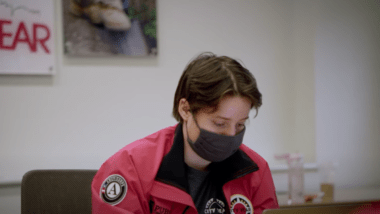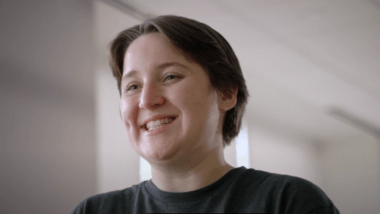The Benefits of Social Emotional Learning
By Kate Seltzer, City Year Boston AmeriCorps member ’21
“You are my other me. When I do harm to you, I do harm to myself,” my seventh graders recite this together every day.
Then, we have a conversation about our moods before jumping into the lesson. I am an AmeriCorps member with City Year Boston, and part of my job is to support Social-Emotional Learning (SEL). As an extra adult in the (currently virtual) classroom, I assist my partner teacher by supporting students academically and emotionally. Using the Zoom chat and breakout room feature, I can speak privately with several students at once about any questions or problems that arise, and I am able to reach out to students who are not engaging with the class to get them back on track.
At the start of my service year, I remember many confused conversations amongst my peers. What even is SEL?
The Collaborative for Academic, Social, and Emotional Learning defines SEL as the practice of acknowledging, understanding, and managing emotions, which helps us set and achieve goals, make responsible decisions and build healthy interpersonal relationships. As a young adult, I couldn’t help but notice how important the SEL training was not only for my students but in my own life. In order to effectively support my student’s needs, I would need to develop a strong social-emotional toolkit for myself.
Using a traditional (non-SEL-focused) approach, students are frequently punished for deviations from “normal” behavior. If Joey* consistently falls asleep in class, maybe they will get an in-school suspension or afterschool detention. The intended message here: if you miss class, you won’t learn, and that has consequences. It is just as important to understand the impact: Joey is now missing more class or has even more on their plate. The intent may be to teach consequences, but in practice, the suspension/detention is a purely punishment-oriented approach. It does not address the event that actually occurred and pushes students out of schools and into punitive cycles.
“For certain students, school might become another opportunity to feel disrespected and controlled, instead of nurtured and motivated.”
This cycle is especially prominent at schools that are systemically underfunded. At my public high school, which was in a highly funded zip code, I experienced numerous symptoms of my anxiety disorder. I had panic attacks which caused me to miss class. My school had four guidance counselors who took me in and talked me down. My teachers were willing to work with me so that I could still complete my work and exams. This approach, while not explicitly SEL-oriented, was grounded in offering grace to a struggling student. Meanwhile, students of all ages in underfunded schools nationally are met with a punitive approach. Students of color within my own school were met with a punitive approach that I never faced. For certain students, school might become another opportunity to feel disrespected and controlled, instead of nurtured and motivated.
“Social-Emotional Learning is functional not only within a classroom bubble but as the core of my personal relationship building and understanding of the world.”
As a near-peer mentor, it is crucial to calmly and carefully approach the conflict. For example, last month one of my students repeatedly used explicit screen names for an online game. Because of this student’s behavior, my partner teacher and I decided to end the game and try again next week. I told the students that I know they are all capable of the maturity we expect, and that I hope we can be better moving forward. Then Claire*, a student with whom I have worked throughout the year, admitted to the inappropriate names and asked if the rest of the class could play without her. Claire was caught up in a natural moment of teen rebellion, maybe connection-seeking. Whether it was facing the impact of her decisions or a desire for the class community to be happy, our communication-based environment contributed to Claire’s decision to own up to her behavior. In this situation, we did have to take something away. However, the “punishment” was a direct reflection of the behavior: the class was not able to meet the conditions for playing. When they met the conditions, they could play.

In any situation, whether in class or my personal life, my intention is to understand where the conflict is coming from. I want to de-escalate conflict and understand every factor in a situation, not search for somewhere to place blame. If a student says something hurtful to one of their peers, I want to unpack why they said it, what they meant, and why it was so hurtful. We must explore why harm is done so that we can change behavior moving forward. As we each develop an SEL toolkit, my students and I work together to be better. As an adult, the SEL skills I practice with my students have been important personally and professionally. Social-Emotional Learning is functional not only within a classroom bubble but as the core of my personal relationship building and understanding of the world.
*Student’s name has been changed due to FERPA rules and respecting privacy.
Related stories
March is an extra special month here at City Year – not only do we get to celebrate AmeriCorps Member...
Read more about Celebrating Women's History Month!Every year, City Year Greater Boston’s Civic Engagement (BCE) team leverages the power of thousands of volunteers to improve the...
Read more about Celebrating Massachusetts STEM WeekSome might say my journey to discovering City Year and my passion for working in education was an unconventional one....
Read more about The importance of human connectionMy name is Rebecca Begemann, and I am a Second Year AmeriCorps member serving at Brighton High School in Boston,...
Read more about Consistency Really is Key
















